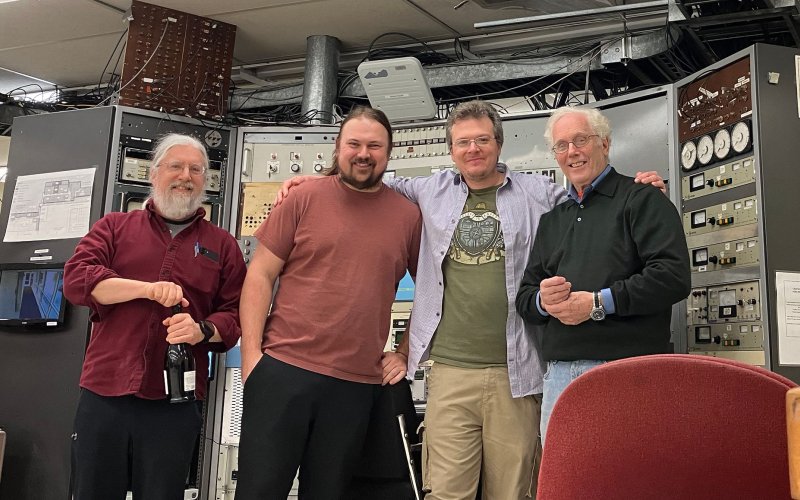UAlbany Physicists Find Preliminary Evidence of a Subcritical Chain Reaction in Lithium

Ion Beam Lab (December 8, 2023) –The Department of Physics at the University at Albany has found preliminary evidence that a subcritical nuclear fission chain reaction can be induced in a Lithium compound.
Supercritical fission chain reactions in heavy elements such as Uranium and Plutonium are more familiar to people, but UAlbany’s work shows that light elements can undergo fission too, and Lithium is one of them. Lithium from batteries may now get a second life in subcritical nuclear reactors because it is a safer fuel than Uranium and the other traditional options, operating below super-criticality; it can therefore cause neither a melt-down nor an explosion. It has been considered as a component in modular molten salt reactors before but not as a fuel source. As an alkali metal, by itself, the element Lithium is reactive, especially in water, but it can be “tucked away” safely into a salt compound.
All of the isotopes involved are stable unless bombarded by high-energy neutrons. The new reactor concept here is therefore much safer than the older, classic nuclear reactor concepts: it relies upon “neutron activation.” No long-lived radioactive isotopes are formed, and when turned off, the reactor will be OFF, with any residual radiation decaying away rapidly, thus making a nuclear disaster like Chornobyl or Fukushima impossible. The positive implications of this technology in moving away from fossil fuels to combat climate change are staggering. Homes, businesses, and cities will be impacted, as well as vehicles, ranging from automobiles to spacecraft.
On Friday 12/8/2023, Assoc. Prof. Matthew Szydagis, the inventor of the concept, worked with physics PhD graduate student Andrew Knutson and retired Prof. Bill Lanford to test it at the Ion Beam Laboratory on UAlbany SUNY’s uptown campus. While the results will require additional replication and external peer review of publications to ensure their robustness, the preliminary data are very promising, appearing to confirm the thousands of computer simulations performed by Prof. Szydagis over the past year.
Szydagis first got the idea to make a small-scale, safe nuclear reactor from imagining new types of neutron sources for dark matter detector calibration and also from hearing claims of UAP attraction to nuclear reactors, missiles, and material sites (UAP stands for Unidentified Aerial Phenomena, which Szydagis also studies, in collaboration with Prof. Kevin Knuth and Assoc. Prof. Cecilia Levy). As a result, this first test has been retroactively named UAP-1 (UAlbany Pile 1) in direct honor of Enrico Femi’s CP-1 (Chicago Pile 1) and the UA1 experiment, which led to Rubbia & van der Meer being awarded a Nobel Prize for the discovery of the weak-force bosons. But unlike those tests, the Lithium fission reactor idea relies only upon already-known physics.
The scientific i.e. quantitative details of the overall idea and the initial tests, including how to overcome the amount of initial input power required, remain confidential, as patent rights for the reactor design are pending. This project is now called the AngelCore Initiative (a name inspired by the Plutonium “Demon Core” of nuclear history lore).


